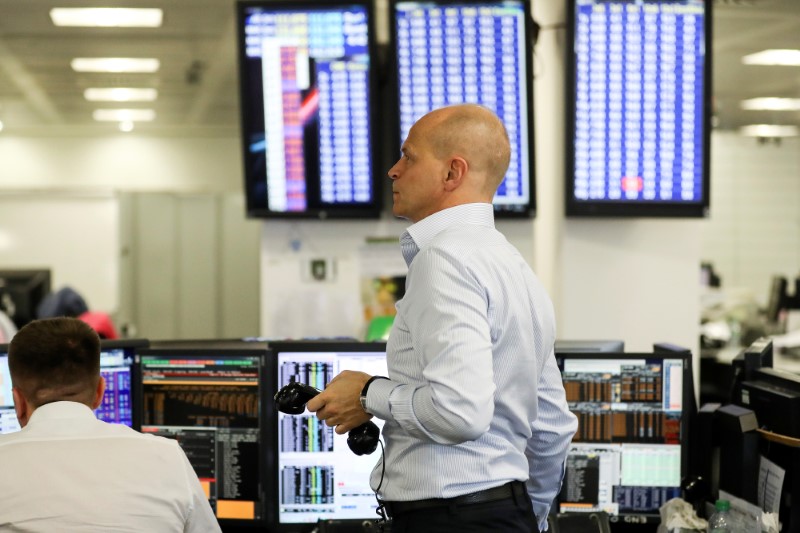Fed’s Powell opens door to potential rate cuts at Jackson Hole
(Bloomberg) -- American financial conditions have loosened at the fastest pace since at least 1990, belying mounting investor skepticism that a V-shaped economic recovery will follow the pandemic-induced crash.
A Bloomberg measure of market health across bond, stock and liquidity indexes has staged a revival like never before -- bouncing back to early March levels, when recorded coronavirus cases globally were around 90,000 versus more than 4.8 million today.
All told, this gauge of animal spirits has improved from the nadir by 5.4 standard deviations in just 37 trading days, a feat that took 50 days back in 2008.
Explaining why investors are getting their mojo back is the easy part. Thank historic policy stimulus, indications that the collapse in the investment and consumption cycle has bottomed, as well as the global race for an experimental vaccine.
But figuring out whether the everything-rally -- from stocks and Libor to credit spreads -- is sustainable is the hard part. With 68% of money managers in a Bank of America Corp (NYSE:BAC). survey saying a bear-market rally is underway, sentiment remains febrile.
“The market is clearly pricing in chances of a vaccine or effective treatment,” said Vasileios Gkionakis, head currency strategist at Banque Lombard Odier & Cie. “A strong second wave of the virus, with new rounds of lockdowns, would change all this.”
While data like Germany’s ZEW survey of investor expectations flash hope, quantitative investors warn reopening economies could trigger fresh waves of virus cases and renewed market volatility.
A key component of market stress, the VIX index, has underperformed the other eight elements of the measure. The so-called fear gauge of S&P 500 volatility currently has a reading of about 29, well above the 20 average of the pre-2008 era, or 1.3 more in standard deviation terms.
Global coronavirus deaths ticked down to 3,154 on Monday, similar to levels seen during the last week of March, according to data compiled by Bloomberg. That gives hope to investors, who know that while new daily infections have hovered near the 90,000 level for about six weeks, that reading is somewhat inflated by increased testing.
©2020 Bloomberg L.P.
